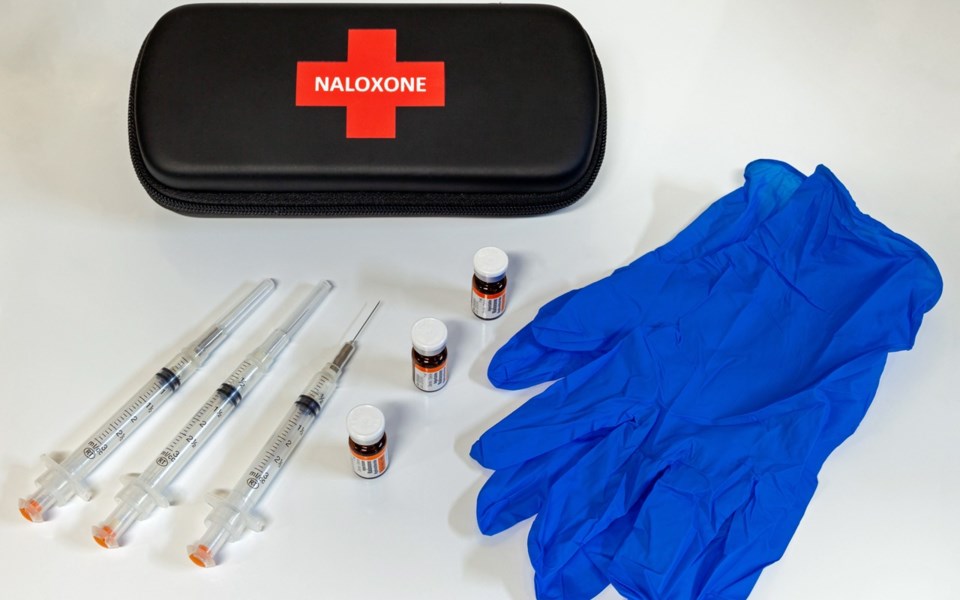communities in the Sea to Sky are getting some additional assistance to deal with the opioid crisis.
The corridor is now home to one of 16 new Community Action Teams (CAT) throughout the province tasked with providing support for those at risk of overdose.
The CATs are possible in part thanks to $3.5 million in municipal funding announced by provincial mental health and addictions minister Judy Darcy at last month's Union of BC Municipalities Convention.
The 16 new CATs are in addition to 19 already operating throughout the province.
In the Sea to Sky corridor, the lead financial agency for the project (which received a $100,000 grant from the province) is Squamish Helping Hands.
With just one meeting under its belt, its total makeup has yet to be confirmed, said Geoff McKee, medical health officer with Vancouver Coastal Health (VCH).
"This is really about finding local solutions to local issues ... These CATs have been really quite successful in their ability to engage a variety of local stakeholders in other communities, including elected officials, healthcare providers, law enforcement, non-profits and people with lived experience," McKee said.
"This broad engagement has allowed for unique responses to local issues ... things like targeted naloxone training, development of peer-support networks, anti-stigma campaigns, or planning for some overdose prevention services within a community."
The CATs are targeted at communities that are "hardest hit" by the overdose crisis, according to the province.
"I can say we saw a considerable increase in overdose deaths in the region for 2017 and 2018, compared to prior years, and really that follows the trend we saw in other regions throughout B.C.," McKee said.
"I can say most of the deaths in the Sea to Sky occurred in Squamish, which is expected given the larger population there."
This year has shown some "positive signs" provincially, he added, noting that "the number of deaths in 2019 appears to be lower."
This year has seen 10.3 overdose deaths per 100,000 in VCH's North Shore/Garibaldi zone, which comprises the Sea to Sky. That's down from 13.6 last year, and 15 in 2017.
"It's difficult to say what exactly led to this decrease, but there is evidence that interventions that prevent overdose deaths, such as naloxone and overdose prevention sites, are having an effect," McKee said.
"Nonetheless we're still seeing fentanyl and analogs in the drug supply, so the risk is still there, and the number of deaths is still way too high."
Stats from the BC Coroners Service show that VCH had the second-highest number of illicit drug deaths in the first six months of 2019 (at 164. The Fraser Health Authority was No. 1 at 188).
VCH also had the highest rate of illicit drug deaths (27 deaths per 100,000 people—the provincial rate was 22 deaths per 100,000).
"When we're looking at VCH in general, many of those numbers are coming from Vancouver, in particular the Downtown Eastside," McKee said.
"What we do know though is that we've seen increased rates in the last few years in many of our regions, and I think it just underscores the need to look at new avenues for helping to find solutions to address the issue."
Locally, the Whistler Community Services Society (WCSS) works "in really close partnership" with VCH to respond to opiate overdoses, providing naloxone kits and training, as well as education through Connect Whistler (the resort's welcome week for new arrivals), said executive director Jackie Dickinson.
The social services provider also now allows people to book appointments for naloxone training through its website.
"We have gotten quite a bit of uptake (through the website), but also the big request that we've gotten over the last 12 months is from employers asking us to come in and administer this training to their staff, which is really interesting, and really exciting," Dickinson said.
As of August, Whistler is also home to a VCH overdose outreach worker serving the Whistler and Pemberton region.
While WCSS doesn't have local overdose stats, Dickinson said frontline workers encounter the crisis through the clients they serve.
"Sometimes people aren't coming in and identifying that they have an issue, but they're maybe living [with someone who might], and that makes sense—when you're living in a high-density house with like 12 people, the likelihood of an overdose is quite high," she said.
"We don't have stats on how many people have overdosed or how many times those kits have been administered, but I'd like to believe that the work that we've done over the last 12 months to make those kits more accessible has saved peoples lives."
Read more here: www.vch.ca/public-health/harm-reduction/overdose-prevention-response/about-opioids.




